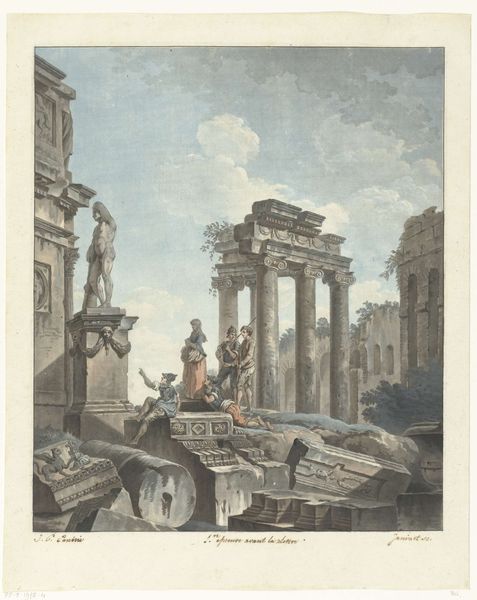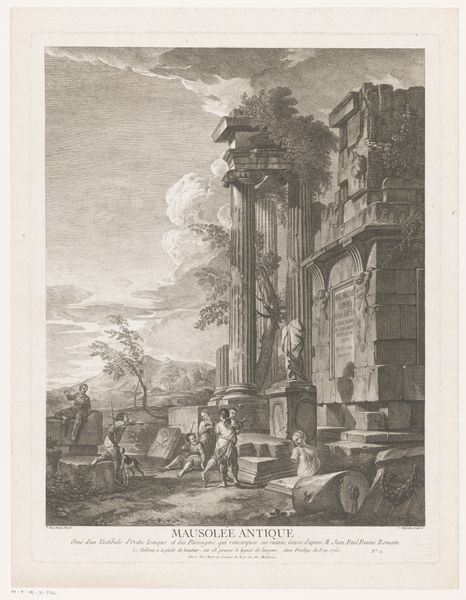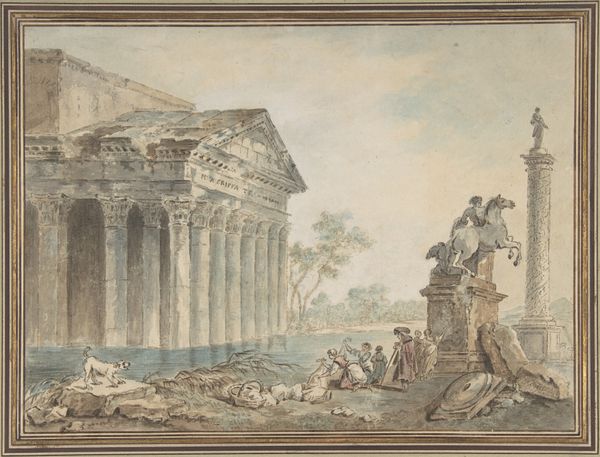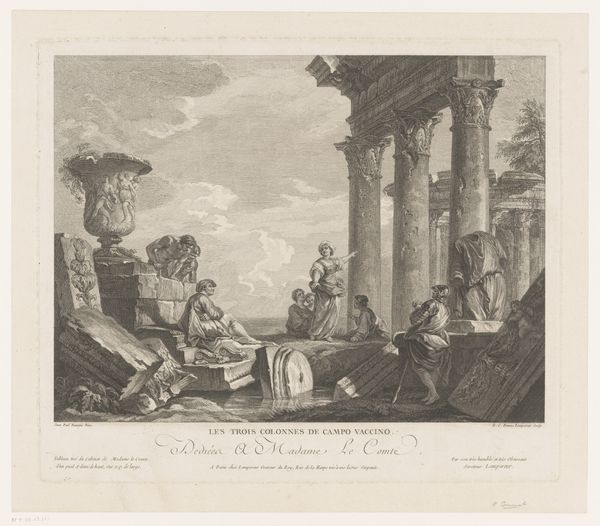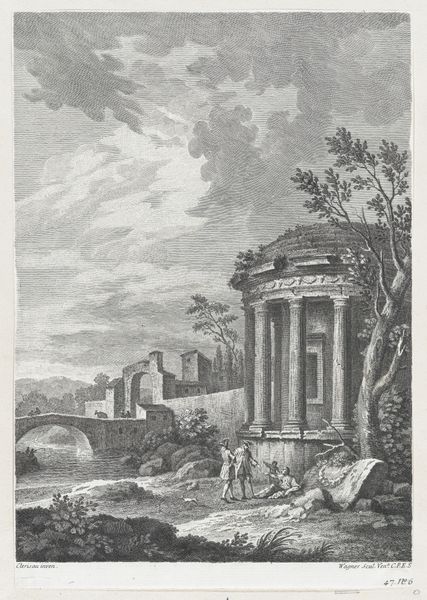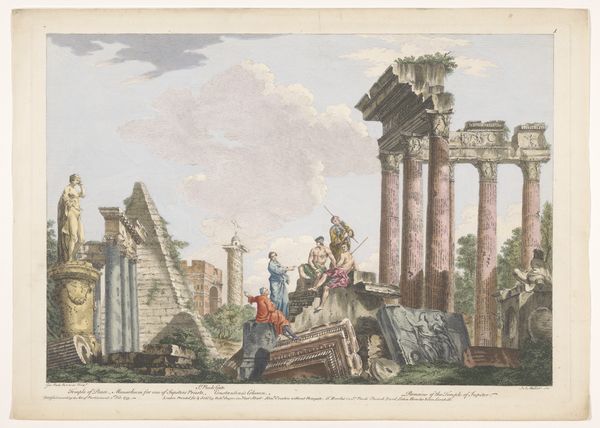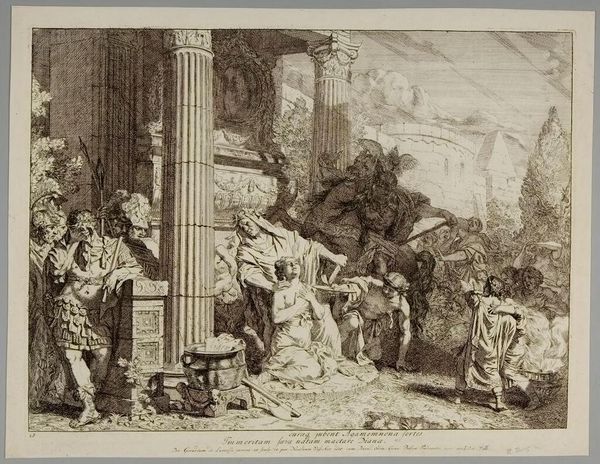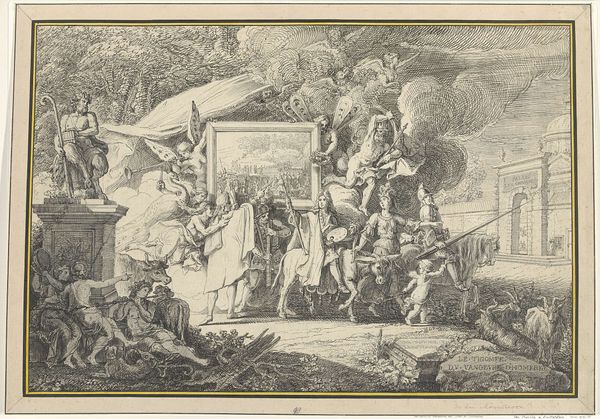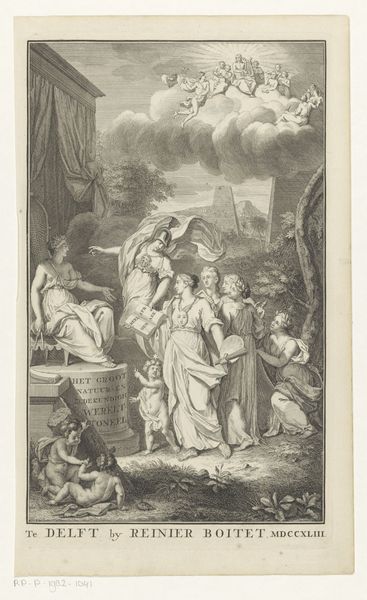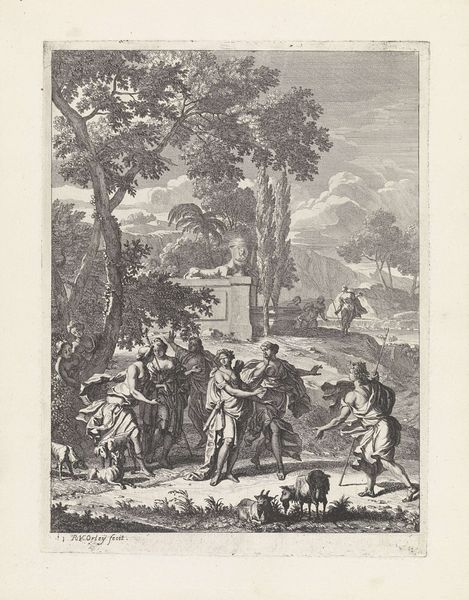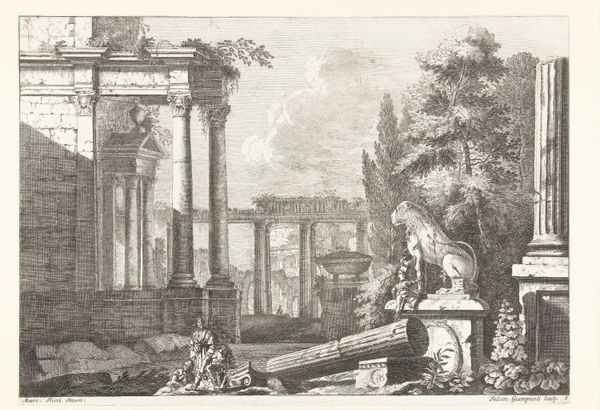
drawing, watercolor
drawing
neoclacissism
landscape
classical-realism
figuration
watercolor
line
cityscape
watercolour illustration
history-painting
academic-art
watercolor
Dimensions: height 341 mm, width 280 mm
Copyright: Rijks Museum: Open Domain
Curator: Before us, we have Jean-François Janinet’s "Antique Ruins," a delicate watercolor drawing created between 1762 and 1798, here on view at the Rijksmuseum. Editor: There's a dreamy, almost melancholic feel to this scene. The muted colors lend it a timeless quality, as though we’re peering into a memory rather than a real place. Curator: It's a quintessentially Neoclassical vision, isn't it? The artist deliberately juxtaposes the grandeur of classical architecture with its ruinous state. Note the placement of figures amidst the fallen columns. This speaks volumes about the passage of time and the impermanence of even the most powerful empires. Editor: The artist uses lines to create this spatial organization which is then complimented with shading; It's fascinating how the precise linework captures both the structural solidity of the architecture and the softening effect of decay, particularly in the foliage encroaching on the stones. Also notice the visual weight that artist placed on the building compared with the open, cloudlike sky. Curator: And beyond mere visual appeal, Janinet’s drawing offers a deeper meditation. Ruins, during this period, were potent symbols. They represented the Enlightenment's fascination with the past, but also served as a reminder of the fragility of human achievement. It also illustrates our connection with the past, suggesting that those who are studying this scene can glean information from it, but the architecture is decaying nonetheless. Editor: The artist very deliberately organizes visual signs which connote decay and loss with people observing the same elements which suggests to the contemporary viewers who were exposed to this in the later 18th century could come to realize the necessity for cultural awareness of both present and past symbols. Curator: The small figures populating the scene underscore this. They appear almost as tourists, contemplating the remnants of a lost civilization and trying to contextualize their heritage. The very deliberate posing creates a sentimental yet curious view to take in and relate. Editor: This piece really highlights the power of art to synthesize history, philosophy, and aesthetics. Thanks to close visual and theoretical reading, this artist really synthesized different concepts for us to grasp. Curator: Indeed, and Janinet’s skillful rendering allows us to partake in that very synthesis even centuries later. Editor: This artwork is evidence of our collective curiosity.
Comments
No comments
Be the first to comment and join the conversation on the ultimate creative platform.
